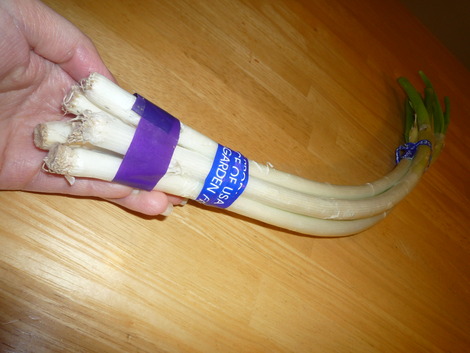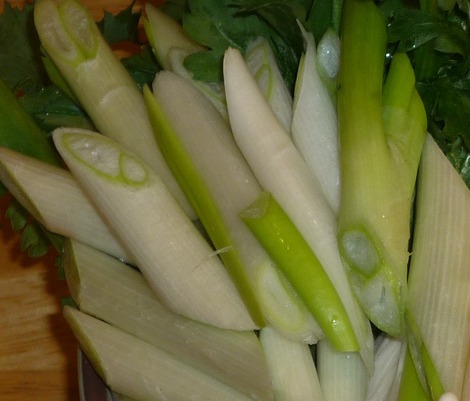If you grew up bilingual, I’m sure you can relate to translating words (or phrases) from one language to another and getting it completely wrong.
I was helping my mom in the kitchen one day and she asked me to get her negi. When I came back with an onion (yellow onion) she told me I had a tamanegi and she needed negi. I realized my confusion and got to thinking. Why is onion in English called onion and all related plants are named XXX onion such as green onion, Welsh onions, etc. And why is negi in Japanese and called negi and all related plants called XXX negi such as tamanegi. (In this case, the tama part of tamanegi means ball.)
Ok if you read this far you’re probably thinking who cares. But I wondered this because I wondered if negi is used more commonly as a base in Japanese cooking compared to its oniony relative the tamanegi. At least it seems to me that negi were used in a huge variety of traditional Japanese dishes before tamanegi found their way into Japanese cooking. Now, I’m not sure if onions were traditionally used more than green onions in Western cooking but onions are essential to making a Mirepoix which serves as a base for a wide number of French dishes.
| English | Japanese |
|---|---|
| Onion | Tamanegi |
| Green Onion | Negi |
Ok enough rambling on about words and onion theories.
Negi is interesting because it is used as a herb and a vegetable. It is often chopped fine and added raw as a topping to noodle dishes or cut into large chunks and added to nabe or sukiyaki dishes.
I found these negi in California but they are slightly skinnier than the ones in Japan.

Negi chopped up and ready to be added to my nabe (hot pot).


Naomi Kuwabara was born and raised in California but spent many summers in Japan growing up. She has spent time living in Hokkaido and Osaka, both meccas for Japanese cuisine. Her passion is cooking and sharing her experiences cooking Japanese food with others. Her blog Umamitopia is about her experiences cooking Japanese food. Her greatest inspirations are from her mother and grandmother. Her cooking adventures can be found at http://umamitopia.com.








